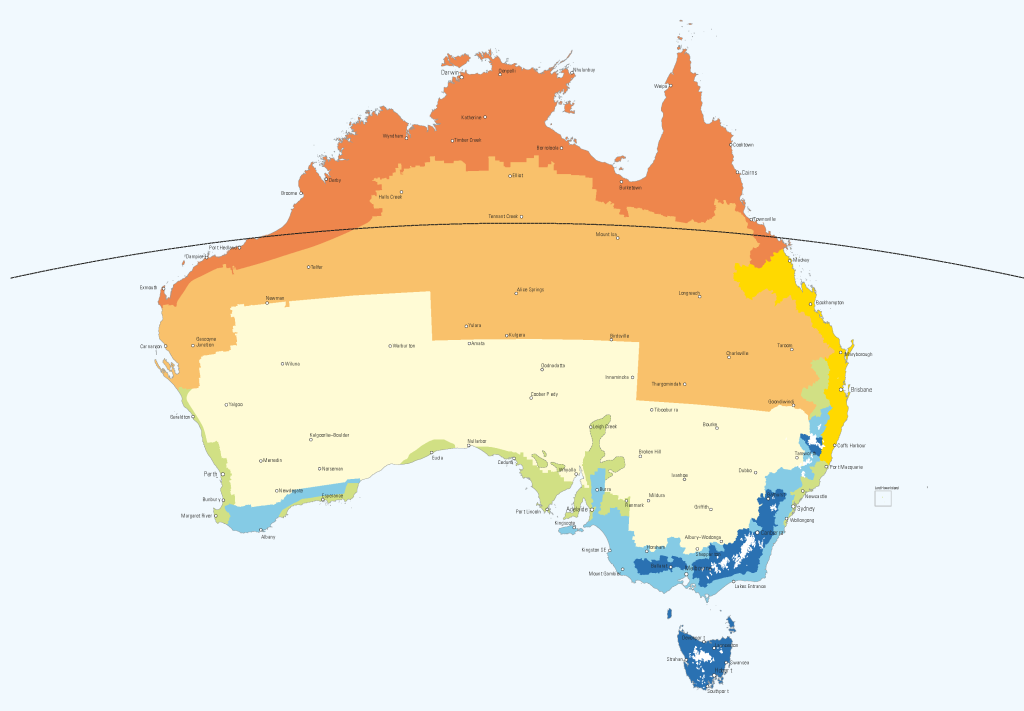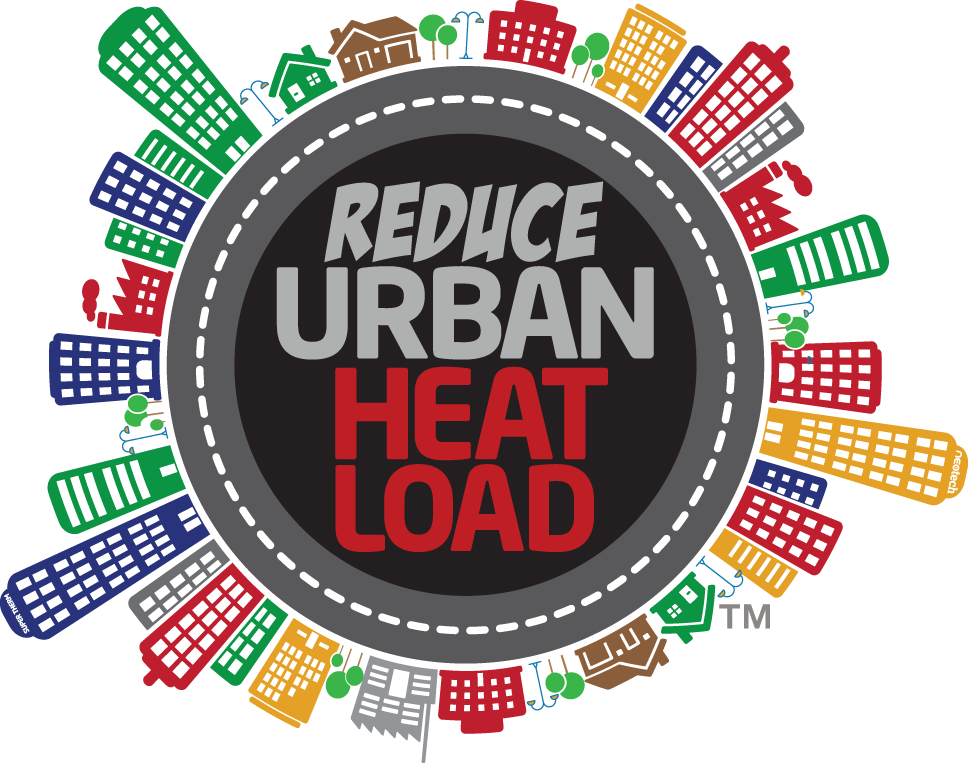The Fallacy of the Cool Roof Winter Penalty
People love a good rumour…and then it becomes ‘their truth’. We did our research on the fallacy of the old ‘winter penalty’ for cool roofs and discovered its all made up.
Leading organisations globally including Princeton University, University of Reading, Roofing Magazine, USA Department of Energy, South Australian Government and Lawrence Berkeley National Laboratory along with a myriad of others have all stated that the ‘winter penalty’ is minimal over the benefits of summer gains.
So there you have it…cool roofs are the go for proven energy savings
- Cool Roofs as an Energy Conservation Measure for Federal Buildings – U.S. Department of Energy
- City of Adelaide Cool Roof Trial 2022-2023
- Summer and Winter Effect of Innovative Cool Roof Tiles on the Dynamic Thermal Behavior of Buildings
- The joint influence of albedo and insulation on roof performance: A modeling study
- Study of ‘cool roofs’ offers route to energy savings
- Cool Roofs Are Still a Hot Topic
- Do Cool Roofs Make Sense in Colder Climates?
- Are Cool Roofs Beneficial in Cold Climates?
- How Cool Roofs Promote Energy Savings, Cooler Cities
- South Australia’s Cool Roofs Regulation – A Discussion Paper – Government of South Australia
Want an independent report on cool roofs and the ‘winter penalty’ by Andre Desjarlais‘ 2009 presentation from Oak Ridge National Laboratory, US Department of Energy. This is the same DOE that rated Super Therm as having 20-50% energy reduction in 3 different locations.
Reduces cooling loads:
• Reduces peak energy demand
• Can reduce ambient temperature in an urban setting (urban heat island)
• Improved air quality
• Further energy reduction
• Cool roofs being included into energy codes
The Proof: A Case Study by the DOE. Even a test from 2004 with only 29% solar reflectivity (Evergreen) had a saving of $8,054 for Paulding County Georgia Elementary School, USA and showed even the supposed ‘winter penalty’ was still minor in energy consumption to the cool roof summer advantages.

Bonus: Debunked media on cool roofs and insulation coatings/paints
US Department of Energy Cool Roofs Report 2003
The savings sic of cool roofs correspond to about 3.8% and 7.5% of the base energy costs for FEMP facilities and include the increased heating energy use (penalties) in winter.
Assuming an average nation-wide (USA) insulation level of R-11 (R 2.0 in Australia) for FEMP building roofs, the calculations in this document suggest nationwide savings in energy costs of $16M and $32M for two scenarios of increased roof albedo (moderate and high), respectively. The savings correspond to about 3.8% and 7.5% of the base energy costs for FEMP facilities and include the increased heating energy use (penalties) in winter.
As mentioned in the document, there is a whole range of options in between these ends. This does not even account for labor costs associated with re-roofing of non-cool roofs.
Cool Roofs as an Energy Conservation Measure for Federal Buildings – U.S. Department of Energy
Prepared by: Heat Island Group, Lawrence Berkeley National Laboratory
“Thus there seems to be significant benefits from implementing cool roofs in FEMP facilities and buildings.”
Department of Energy Cool Roof Report
Summer and Winter Effect of Innovative Cool Roof Tiles on the Dynamic Thermal Behavior of Buildings
April 2014
A study titled “Summer and Winter Effect of Innovative Cool Roof Tiles on the Dynamic Thermal Behavior of Buildings” examined the year-round performance of high-reflectance clay tiles in central Italy. The findings revealed that during winter, these cool roof tiles resulted in an average external surface temperature reduction of about 1°C compared to traditional tiles.
Importantly, this minor decrease in external temperature did not lead to a significant reduction in indoor operative temperatures during the winter months. This suggests that the potential “winter penalty” of cool roofs is minimal, and the substantial cooling benefits observed during summer—such as lowering external roof temperatures by over 10°C and indoor temperatures by more than 3°C—are not offset by significant heating drawbacks in winter.
This minor decrease in external temperature did not lead to a significant reduction in indoor operative temperatures during the winter months.
The joint influence of albedo and insulation on roof performance: A modeling study
June 2015
The advanced Princeton Roof Model (PROM) is evaluated and then applied to quantify the heat transferred through various modular roof structures over an entire year. The goal is to identify an optimal combination of roof reflectivity and insulation thickness that will reduce energy consumption and minimize cost. Meteorological data gathered over the Northeastern United States (Princeton, NJ) is used to force PROM.
Our results reveal that for new constructions or for retrofits in the region, an R8.4 (around 46 cm thick roof insulation) white roof (assumed albedo = 0.6 or greater) would significantly reduce the combined heating and cooling load attributable to the roofs. The wintertime penalty of white roofs is also shown to be insignificant compared to their summertime benefits.
The findings are pertinent to many other densely populated areas with comparable climates where, despite a much higher number of heating versus cooling degree-days, white roofs are overall advantageous. A cost optimization analysis found that doubling, tripling and quadrupling the insulation thickness from the baseline case of 5.08 cm (2 in.), at an albedo of 0.45, requires 13, 17 and 19 years, respectively, to recover the additional cost incurred.
The wintertime penalty of white roofs is also shown to be insignificant compared to their summertime benefits.
Study of ‘cool roofs’ offers route to energy savings
December 19, 2012
The white roof was tolerable but the black roof was too hot to stand on. “You could feel it coming through your shoes,” recalls Rule, a senior project engineer at the lab, who is collaborating with Elie Bou-Zeid, a professor of civil and environmental engineering at Princeton University to test the effects of the roof colors on energy use.
The researchers installed equipment that will provide a precise picture of what kinds of roofs work best in what kinds of weather, particularly in a place like New Jersey where it’s icy cold in winter and steaming hot in summer.
“The question is: What gives you the most savings for the buck?” said Bou-Zeid.
However, the data also indicates that the thickness of the roof’s insulation, called the R-value, could be the most crucial factor in determining whether the building will absorb the heat. A thicker roof seems to eliminate the differences between the black and white roofs and it works in all seasons, Bou-Zeid said. But more insulation costs more money than painting a roof white and the difference in cost will be another factor the study will consider.
The main effect cool roofs could have on the environment is to reduce greenhouse gas emissions by cutting the amount of energy used to cool buildings. A 2010 study by the Lawrence Berkeley National Laboratory in Berkeley, Calif., estimated that commercial building owners in 236 U.S. cities who installed cool roofs in warm areas could reduce the amount of energy used for air conditioning by 10 to 30 percent. The study concluded that commercial building owners in cooler areas would pay more for heating in winter but would still realize a net decrease in energy costs.
The study concluded that commercial building owners in cooler areas would pay more for heating in winter but would still realize a net decrease in energy costs.
Cool Roofs Are Still a Hot Topic
July 23, 2018
The overwhelming consensus is that cool roofs are a clear top choice in warm climates, but what about cooler ones?
In “cool” climates where heating degree days outnumber cooling degree days, the traditional thinking goes, the cost of extra heating demand caused by cool roofs in winter would offset the cooling energy cost savings in summer. Despite decades of market experience and a vast body of research supporting the net benefits of cool roofs in Climate Zone 4, this line of thinking has been an obstacle to cool roof policy in the United States. Let’s dispel some of those myths by looking at a few facts.
Winter heating penalties associated with cool roofs in cool climates are vastly overstated. Higher insulation levels in Climate Zone 4 do not offset the benefits of cool roofs. Research over the last couple of year (field and modeling), some of which I’ve cited in this article, show that the so-called “winter heating penalty” is much smaller than many thought.
Specifically, a field and modeling study done at Princeton University’s campus (in Climate Zone 4) compared cool and black membranes over roofs with insulation levels up to R-48. The studies show that cool roofs reduce heat inflow in summer but have the same heat loss in winter as black surfaced roofs over the same level of insulation.
The study finds that “Cool roofs for the simulated buildings resulted in annual energy expenditure savings in all cold climates.” The study also identified peak energy savings in addition to the base energy efficiency gains.
Winter heating penalties associated with cool roofs in cool climates are vastly overstated
Do Cool Roofs Make Sense in Colder Climates?
December 1, 2021
Researchers at the Department of Energy (DOE) (same Government organisation that did 3 independent tests of Super Therm and distinguished a 20-50% energy reduction) investigated the benefits of light-colored roof coatings for energy savings and reducing overall summer urban temperatures. The research by DOE National Laboratories in California and Tennessee confirmed energy savings, but it didn’t immediately lead to roofing designers switching to cool roofs and away from traditional dark-colored roofing systems.
Since the early 2000s, many people have been pushing for cool roofs in colder and more seasonal northern climates, as well. For instance, the Global Cool Cities Alliance claims that “almost all of the country can enjoy net energy and energy cost savings when a cool roof is installed, even in cool northern climates.”
The concept behind cool roofs is pretty basic. They’re designed to reflect more sunlight than a conventional dark-colored roof, thus absorbing less solar energy. A dark-colored roof can reach temperatures as high as 150 degrees Fahrenheit under a brutal afternoon summer sun, while cool roofs can stay more than 50 degrees cooler. This reduces the heat flow from the roof to inside the building so the HVAC unit doesn’t have to work as hard, thereby lowering energy consumption from air conditioning in the summertime.
But is the winter heating penalty really that big of a deal? Maybe not. The Heat Island Group did a study where it modeled cool roof applications in cities nationwide, regardless of climate zones. They discovered that cool roof net energy savings would result in all the states they studied, even northern states like New Hampshire and Michigan. Except for extreme cold conditions, like in northern Alaska, the study found positive overall energy savings per square meter of conditioned roof area. There was some heating penalty in northern climates, but the effect was minimal and not much different than in states like California.
The benefits of cool roofs are hard to deny, especially in hot climates. Reflective roofs can help a building realize significant energy savings and, with an increased focus on fighting climate change, cool roofs can also be a big eco-friendly choice as they mitigate urban heat islands and reduce energy demand. Cool roof effectiveness in colder climates is still debated by some, but advocates have shot down their arguments saying the winter heating penalty is minimal and condensation concerns are a bit exaggerated. If you’re in a colder climate and considering a cool roof, it’s wise to do the research and sort through this debate. Despite what you may assume, a cool roof may still be a good investment even in a northern city with harsh winters.
Despite what you may assume, a cool roof may still be a good investment even in a northern city with harsh winters.
Are Cool Roofs Beneficial in Cold Climates?
Spoiler alert: Yes. For a number of reasons, cool roofs still have energy-saving benefits in cool climates. Here’s why.
But variables always come into play. For example, some parts of the United States have cold winters without significant snow cover. Climate change researchers also point out that some previously snowy regions no longer typically have snow cover throughout the year.
And that’s the challenge in determining cool roof installation benefits for northern climates, says Abboud. “Cool roofs can have a ‘wintertime heating penalty’ (or a small increase in energy use) because they reflect solar heat that would help warm the building,” he says.
Building owners should account for this penalty in assessing the overall benefits of cool roofing, he says. “However, in most U.S. climates, including northern climates, this penalty is not large enough to negate the energy savings from less summertime cooling,” Abboud says. “This is because the amount of useful energy reflected by a cool roof in the winter tends to be less than the unwanted energy reflected in the summer, which occurs primarily because in wintertime days are shorter, sunlight is less intense, and there are generally more cloudy days.”
this penalty is not large enough to negate the energy savings from less summertime cooling.
How Cool Roofs Promote Energy Savings, Cooler Cities
The bottom line on cool roofs is that by reflecting heat, and emitting absorbed heat, they keep building cooling costs lower, and city ambient temperatures lower.
While cool roofing isn’t new, interest in energy savings has resulted in changes in building code requirements, particularly in the southern United States, where energy use for cooling occupied space is far greater than heating costs.
In fact, use of cool roofing materials during the last two decades has spread to all climate zones in the United States, reaping varying levels of energy savings.
The prescription for cool roofing materials in cooling-dominated climates is easy to understand when building owners consider the benefits of cool roofs, especially for flat-roofed buildings and low-slope roofing.
In regions of the country where cooling is dominant, the amount of direct sunlight on the roof — frequently the largest exposed plane of a building, especially for low-rise buildings — often translates to significant heat gain into the building.
In fact, use of cool roofing materials during the last two decades has spread to all climate zones in the United States, reaping varying levels of energy savings.
South Australia’s Cool Roofs Regulation – A Discussion Paper – Government of South Australia
December 2010
While there usually is an increase in the demand for heating in winter, for cool roofs introduced in the right locations and the right building types this so called “winter penalty” can be insignificant and is much lower than the reduction in the cooling load.
Cool roofs therefore have the potential to achieve a significant reduction in the annual cooling/heating demand from buildings at a very low cost, especially if light coloured paints are incorporated into the building design from new.
A summary of results for cooling and heating demand for residential buildings (expressed in MJ/m2) is included in Appendix 1. The results indicate that while cool roofs are beneficial in summer by reducing the house cooling demand there is a corresponding reduction in heat transfer into the building in winter. This results in a so called “winter penalty” which is undesirable especially in colder climates and results in an increase in the winter heating demand that can be greater than the reduction in cooling demand in summer. For the Adelaide plains region (BCA Climate Zone 5 – Warm Temperate) the net change in the combined cooling and heating load between a cool roof and a dark roof ranges between ‐ 1.5% and +1.9%. This is despite the fact that the cooling demand is reduced by between 8% and 25% for each building. This paragraph makes no sense in context to the rest of the report.
While cool roofs deliver reductions in cooling/heating demand in the north of South Australia, in general these are small and on average there is little benefit, if any, from cool roofs in residential properties across the State. The report states ‘on average there is little benefit’ yet it says cooling demand is reduced by between 8-25% for each building.
…this so called “winter penalty” can be insignificant and is much lower than the reduction in the cooling load

Source: Australian Building Codes Board
 1 1 | Hot humid summer, warm winter |
 2 2 | Warm humid summer, mild winter |
 3 3 | Hot dry summer, warm winter |
 4 4 | Hot dry summer, cool winter |
 5 5 | Warm temperate |
 6 6 | Mild temperate |
 7 7 | Cool temperate |
 8 8 | Alpine |













